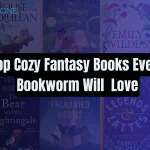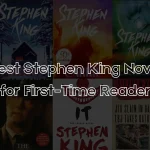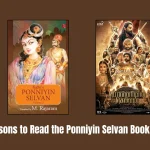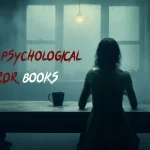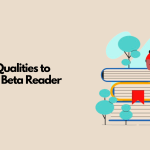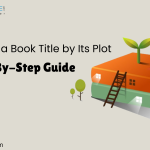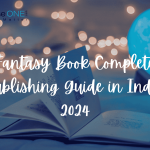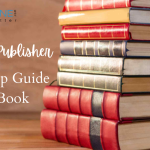What does "New Adult" really mean?
Defining Characteristics of New Adult Fiction
Age range and protagonists
New adult fiction often involves protagonists aged 18 to 30, depicting the journey from youth to maturity. These protagonists frequently encounter real-life obstacles such as college, first jobs, identity exploration, and complicated romantic relationships.
The age group allows for more mature themes than young adult novels while yet appealing to readers entering early adulthood. This emphasis on life’s crucial moments makes the genre particularly relevant to its intended audience.
Themes typically explored
Themes often include:
- Identity and self-discovery
- First serious romantic relationships
- Mental health struggles
- Independence and freedom
- Career and educational challenges
Differences from Young Adult and Adult fiction
New Adult fiction differs from Young Adult and Adult fiction primarily in the age of its protagonists and the themes it explores. While Young Adult typically targets readers aged 12–18 and focuses on adolescence and coming-of-age experiences, New
Adult features characters aged 18–30 dealing with college life, early careers, and adult relationships. Unlike Adult fiction, which often involves fully matured characters, New Adult bridges the gap, highlighting the struggles of emerging adulthood.
You may also like: How to Write a Short Fiction

Popular Tropes in New Adult Fiction
Coming-of-age journeys
Coming-of-age journeys are a hallmark of New Adult fiction, capturing the emotional and psychological growth of characters as they transition into adulthood.
These narratives often explore themes like self-discovery, independence, and the trials of early adult life – college, careers, relationships, and identity. Readers connect deeply with these arcs because they mirror real-life struggles, offering both escapism and relatability. Through triumphs and failures, protagonists emerge with a stronger sense of self and purpose.
Romance with emotional depth
Romance with emotional depth is a hallmark trope in New Adult fiction, exploring love stories that go beyond surface-level attraction. These narratives often delve into complex emotions, past traumas, and personal growth, making the romantic connections feel authentic and intense.
Characters typically face real-life challenges – such as heartbreak, loss, or identity struggles that deepen their emotional bonds. This trope resonates with readers seeking heartfelt, relatable romance that mirrors the emotional intensity of early adulthood.
Self-discovery and identity
One of the most prominent tropes in New Adult fiction is self-discovery and identity. These stories often explore characters navigating the transition from adolescence to adulthood, prompting questions about who they truly are and what they want from life.
Themes like leaving home, starting college, or entering the workforce serve as catalysts for personal growth. This trope resonates with readers facing similar challenges, making it both relatable and emotionally impactful in the New Adult genre.
You may also like: How to Publish My Book | Self Publish Your Book | BlueRoseOne
Genres Within New Adult Fiction
Contemporary
Contemporary literature is one of the most popular New Adult literature genres, with a focus on realistic, present-day settings and contemporary life events.
These stories frequently focus on college life, first jobs, romantic relationships, and the struggle to independence. The emotional depth and genuine problems of young individuals navigating maturity make this genre especially poignant.
Contemporary New Adult novels generally combine romance, conflict, and personal development, providing readers with both escapism and a genuine connection to real-world issues.
Fantasy and Paranormal
Fantasy and Paranormal stories within New Adult fiction often blend imaginative worlds or supernatural elements with the emotional intensity of early adulthood.
These genres explore themes like identity, power, and transformation, often through characters facing magical challenges alongside personal growth.
Whether set in alternate realms or contemporary settings with mystical twists, fantasy and paranormal New Adult novels appeal to readers seeking escapism combined with relatable, coming-of-age experiences. Popular examples include A Court of Thorns and Roses by Sarah J. Maas.
Romance and Erotica
Romance and erotica are popular genres in New Adult fiction, with stories exploring passionate relationships, emotional closeness, and sexual awakening.
These stories often follow protagonists in their late teens or early twenties as they navigate love, lust, and the complexities of mature relationships.
The genre combines emotional depth with mature content, reflecting the changing identities and wants of young adults. Romance-driven stories are frequently strengthened with realistic conflicts, making them more accessible and emotionally compelling.
Mystery and Thriller
Mystery and thriller novels in New Adult fiction combine exciting narratives with the emotional intensity of early adulthood.
These stories frequently follow college students or young professionals as they navigate perilous secrets, criminal investigations, or psychological tensions while coping with personal development and relationships.
The genre attracts readers looking for fast-paced action with relatable heroes, combining high-stakes intrigue with the raw, formative experiences that define the New Adult age group.
You may also like: How to Write Book Review
Top Authors and Books in New Adult Fiction
Colleen Hoover
Colleen Hoover is one of the most prominent voices in New Adult fiction, known for blending emotional depth with contemporary romance.
Her breakout novel Slammed introduced readers to complex young adult experiences, while later works like It Ends With Us and Verity have expanded her acclaim.
Hoover’s stories often tackle real-life issues such as trauma, love, and personal growth, making her a favorite among readers navigating the transition into adulthood.
Elle Kennedy is a best-selling New Adult novelist known for her compelling blend of romance, college life, and emotionally charged characters. Her Off-Campus series, which began with The Deal, has become a genre mainstay, capturing readers’ attention with relevant topics and humorous banter.
Kennedy’s writing frequently explores human growth, relationships, and self-discovery, making her a popular choice among followers of current New Adult romance.
Tammara Webber
Tammara Webber is a prominent name in New Adult fiction, best known for her Between the Lines and Easy series. Her work blends romance, emotional growth, and real-life challenges faced by college-aged characters, making it highly relatable for young adults transitioning into adulthood.
Webber’s writing is praised for its strong character development and authentic voice, helping define the New Adult genre and gaining a loyal readership worldwide.
You may also read: Intezaar-e-Yaar a Book by Shaikh Shaista: Book Review
Tips for Writing New Adult Fiction
Creating authentic characters
Creating authentic characters is essential in New Adult fiction, where readers seek genuine emotional depth and relatable experiences.
These characters often grapple with identity, independence, and intimate relationships, making it vital to reflect realistic emotions, flaws, and growth.
Writers should focus on consistent character development, meaningful dialogue, and personal stakes that resonate with readers navigating similar life stages. Authenticity helps build empathy and keeps the story grounded in the realities of early adulthood.
Balancing maturity and emotion
Balancing maturity and emotion is essential in New Adult fiction, as it reflects the nuanced experiences of characters navigating adulthood.
Writers should portray protagonists who face real-world challenges—like careers, relationships, and identity crises—while still experiencing intense emotions common in this life stage. Emotional depth should not overshadow character growth; instead, it should complement it. This balance creates authentic, relatable narratives that resonate with readers transitioning from adolescence to independent adulthood.
Writing realistic dialogue
Writing realistic dialogue is crucial in New Adult fiction, as it helps readers connect with characters navigating adulthood. To achieve authenticity, writers should listen to how people in their twenties actually speak—capturing natural rhythms, slang, and emotional nuance without overdoing it. Avoid overly formal language or forced exposition.
Instead, let dialogue reveal character traits, relationships, and conflicts organically, making the story feel more relatable and grounded in real-life experiences.
You may also like: Best Software Typsetting Books and Magazines in 2025
How to Choose a Good New Adult Book
Read reviews and blurbs
Read reviews and blurbs to get a quick sense of whether a New Adult book matches your interests. Blurbs offer a snapshot of the story’s tone, themes, and central conflict, while reader reviews often highlight the book’s strengths and weaknesses.
Look for comments about character development, emotional depth, and pacing—key elements in New Adult fiction. This can help you avoid disappointing reads and find books that truly resonate with your preferences.
Identify sub-genres you enjoy
Identify sub-genres you enjoy to narrow down your choices within New Adult fiction. This category spans a wide range of sub-genres, including romance, fantasy, thriller, and contemporary drama.
Knowing your preferences—whether it’s enemies-to-lovers romance or college-set coming-of-age stories—helps you find books that truly resonate. Exploring different sub-genres also allows you to discover new themes and voices that align with your interests, making your reading experience more enjoyable and fulfilling.
You may also like: Top 20 Best Mystery Thriller Books You Need to Read in 2025
The Future of New Adult Fiction
Growing acceptance in mainstream publishing
Growing acceptance in mainstream publishing has significantly boosted the visibility of New Adult fiction. Once considered a niche category, it is now recognized by major publishing houses for its commercial potential and relatable themes.
As more readers seek stories that explore early adulthood, publishers are actively acquiring New Adult titles across genres. This growing demand reflects shifting market trends, with traditional and indie publishers alike embracing the genre’s unique voice and emotional depth.
Expansion into diverse voices
Expansion into various voices is defining the future of New Adult literature by including stories from a wider spectrum of cultural, racial, and LGBTQ+ viewpoints.
As the genre evolves, consumers want authentic stories that reflect their many identities and experiences. Publishers and authors are reacting by promoting underrepresented voices and expanding the genre with new themes and characters.
This move not only promotes diversity, but it also enhances the emotional impact of New Adult novels.
Conclusion
New Adult fiction is more than just a stepping stone between YA and adult books — it’s a vibrant, emotionally rich genre that captures the real struggles and joys of growing up. Whether you’re writing it, reading it, or just curious, there’s no denying that NA fiction has carved out a meaningful space in the literary world.
Frequently Asked Questions
New Adult is typically for readers aged 18–30, though older readers can enjoy it too.
While not always officially recognized by publishers, it’s widely used by authors, booksellers, and readers.
NA features older protagonists and deals with mature themes like independence, sexuality, and life after high school.
Absolutely! Many older readers appreciate the emotional depth and nostalgic themes.
Yes! New Adult fantasy is a growing subgenre, often blending magic with real-world issues like identity and love.


